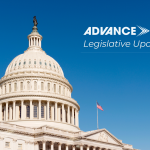 This is the third blog in a series published in partnership with New America through the Partnership to Advance Youth Apprenticeship (PAYA). The blog series highlights how PAYA network sites are using data to improve youth apprenticeship quality and equity.
This is the third blog in a series published in partnership with New America through the Partnership to Advance Youth Apprenticeship (PAYA). The blog series highlights how PAYA network sites are using data to improve youth apprenticeship quality and equity.
In Delaware, youth apprenticeship is a critical pillar of the state’s career readiness initiatives and is a truly collaborative project. While administration of the state’s youth apprenticeship programs falls under the Delaware Department of Labor, related technical instruction is handled by the Delaware Department of Education (DDOE). This requires a significant amount of coordination and partnership across state agencies.
In 2020, Delaware received a grant through the U.S Department of Labor to enroll 400 youth apprentices in the areas of construction, hospitality and Information Technology. This opportunity, and the expansion of youth apprenticeship in the state, enabled Delaware to focus on improving the quality and use of its youth apprenticeship data.
Tackling Youth Apprenticeship Data Challenges
As Delaware works to strengthen and scale youth apprenticeship, the state encountered a few challenges with accessing quality data. For one, state leaders confronted some inflexibilities with the federal Registered Apprenticeship Partners Information Database System (RAPIDS), which includes nationwide data on Registered Apprenticeship participation but does not differentiate youth and adult apprenticeships.
Another challenge was coordinating and systematizing partnerships among agencies and organizations. Delaware first had to create and adopt shared definitions for youth apprenticeship data and then work to break down silos to enable timely inter-agency data sharing.
And finally, state leaders wanted to make sure youth apprenticeship data could fuel program improvement, equity initiatives and storytelling, and made sure to shift from a compliance to a continuous improvement mindset.
To tackle these challenges, DDOE assumed a coordinating role, leveraging its scale as a statewide agency to convene partners, reach consensus on important decisions, and establish data sharing agreements. In this role, DDOE was able to compile and match data, including education records, employment records and social services records, “behind the curtain” before pushing de-identified data back out to partners.
Equipped with relevant and timely data, DDOE is now positioned to support local youth apprenticeship programs to make data-informed decisions. For example, DDOE can identify learners who would be a good fit for youth apprenticeship and provide that information to school counselors ahead of youth apprenticeship recruitment cycles.
This data also enables DDOE to craft a story about youth apprenticeship, targeting policymakers and members of the public with stories about the impact of high-quality programs.
Lessons Learned
One important lesson from Delaware is the critical need for qualitative data from learners. Partners are developing a new case management system to ensure qualitative data is collected, considered, and utilized as part of a continuous program improvement process. To fully understand the story behind the numbers, data must be connected to the learners’ voices and experiences.
Delaware also learned that the goal of youth apprenticeship data systems should not be sustainability alone but rather evolution. Data systems should be flexible, always moving towards the next set of questions the state is looking to explore and answer. If states and youth apprenticeship intermediaries can anticipate the questions they will want to answer in the future, they can begin to build data systems that address those needs.
Delaware’s advice to state and local youth apprenticeship intermediaries is to concentrate first on the initial strategy, coordination of effort, systems building and partner relationships. This will ensure there are suitable conditions for collecting and using youth apprenticeship data effectively. Partners should also establish a shared system of values that emphasize partner action and innovation and are reinforced by established data routines.
Additional blog posts in this series can be accessed here. For additional resources on data and accountability, please visit Advance CTE’s Learning that Works Resource Center.
Kate Kreamer, Deputy Executive Director

